|
TRANSLATE THIS ARTICLE
Integral World: Exploring Theories of Everything
An independent forum for a critical discussion of the integral philosophy of Ken Wilber
 Barclay Powers Barclay Powers is an author and futurist filmmaker. He earned
his Bachelor of Arts in East Asian Studies from Columbia University
and has an extensive background as an independent scholar. He has
studied Chinese, Tibetan and Indian meditation, yoga and martial arts
traditions for more than 30 years. Powers is currently releasing
multiple media projects worldwide in film and print, related to the
evolution of consciousness based on his studies with numerous
masters of ancient wisdom traditions. His most recent film, The Lost
Secret of Immortality, based on his book, won best
spiritual/religious/Christian film at the Great Lakes International Film
Festival, 2012, the Silver Palm Award at the Mexico International Film
Festival, 2012 and best spiritual documentary at the New York
International Film Festival, 2011. See his website at
www.lostsecretofimmortality.com for information on the book,
graphic novel and film. SEE MORE ESSAYS WRITTEN BY BARCLAY POWERS
The Nondual Realization
of Sam Harris
The Future of an Illusion
Barclay Powers
Sam Harris' book, Waking Up: A Guide To Spirituality Without Religion, is definitely an important book because of his position as one of America's most outspoken atheist scientific rationalists. The fact that he's able to discuss spirituality, nonduality, meditation, hallucinogens, and sudden versus gradual enlightenment, within the context of the atheist rejection of religion, is a genuine remarkable personal achievement. This is definitely atheist spiritual rationalism that differs significantly from his fellow skeptics.
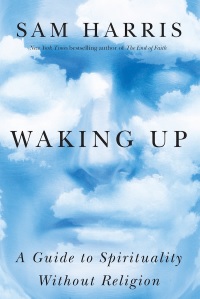
What I liked the most about the book is that whether he openly voices it or not, he is doing his best to reconcile the Bodhisattva perspective of altruism and compassion with science. His personal experience and understanding of mysticism and meditation also differs from many transpersonal/integral models of mysticism, which attempt to reconcile theistic and nontheistic spiritual perspectives. The problem here, is that from the perspective of the actual goal/completion stage of Buddhist meditation, he has not explained, realized or experienced the ultimate perfection of the Buddha nature, the Embryo of Buddhahood, which is the essence of the Tibetan Buddhist meditation/yoga systems he claims to have integrated with science. The central issue here is that the actual completion stage of Dzogchen and Mahamudra completely conflict with science. You can't have it both ways. This inconvenient truth is rejected by the popular secular Buddhist establishment, which assumes it has successfully transcended ancient superstition, but has lost the essential structure of the Buddha nature in the process.
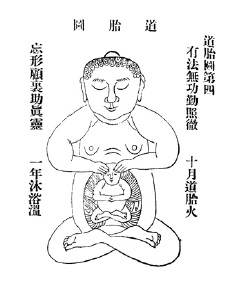
Embryo of Buddhahood
No yogi that has successfully achieved the Trikaya, the union of the three bodies, Nirmanakaya, Sambhogakaya and Dharmakaya, in the last 2500 years would accept Harris' definition of enlightenment. The attempt to integrate Southern and Northern Buddhism with Advaita Vedanta and science simply does not work as outlined, and results in repeated distortions of the actual theory and practice of the majority of Indo-Tibetan meditation/yoga lineages. Once again the meditation establishment provides a Western meditation model, allegedly compatible with science, which is not simply incomplete. What Sam Harris tells you about enlightenment actually prevents you from waking up.
One of the most interesting aspects of the meditation establishment is the way that they intentionally omit historical truths to obscure the facts, which inconveniently contradict their own personal highly distorted perspectives. Here's a good example, “Although the experience of self-transcendence is, in principle, available to everyone, this possibility is only weakly attested to in the religious and philosophical literature of the West. Only Buddhists and students of Advaita Vedanta (which appears to have been heavily influenced by Buddhism) have been absolutely clear in asserting that spiritual life consists in overcoming the illusion of the self by paying close attention to our experience in the present moment.”[1] It sounds like Harris just told us that Taoist meditation, Gnosticism and Hermeticism never existed, while reducing Buddhist enlightenment to the self-help cliché “being in the moment.” On top of this he is certain that his perspective negates the last 10,000 years of shamanism, which could be defined as the most authentic spiritual form of experience, because it does not base its legitimacy on textual interpretation, which changes dramatically with the passage of time.
Mixing Advaita Vedanta and Dzogchen/Mahamudra is a common error, which is not acceptable within the actual Asian lineages themselves. Both Buddhism and Jainism actually completely reject the theistic narrative of the Vedas. As some scholars have noted, the Integral equation of Brahman with emptiness just doesn't work at all. Advaita Vedanta assumes everything is an illusion except that the Self is Brahman (God). Buddhism assumes the Self and Brahman are completely illusory as well. To avoid openly disclosing this amounts to personal deception. This is a vital distinction to make because the radically theistic Advaita Vedanta Self as God perspective is completely contradicted by Harris' atheist/Buddhist position. Additionally, saying that the Self is God is the exact opposite of overcoming the illusion of the self as understood by Dzogchen and other Mahayana and Vajrayana Buddhist systems. All of these systems describe the seed, flower and fruit of meditation/yoga as the Trikaya, the union of the three bodies, which results in an individual experiencing their true identity as a living Buddha, a fully awakened being. This is what it has always meant to fully realize your Buddha nature through meditation. Historically, the meditators that have not successfully realized their Buddha nature have sometimes ended up insisting that it doesn't exist by virtue of emptiness. This is why Buddha nature and the Tathagatagharba literature are sometimes considered to be a false regression to the Vedic Atman/Self. Some scholars go so far as to say this is true of the Primordial Adi Buddha framework of Dzogchen claiming it to be a re-introduced theistic construct, which may be based on Persian mysticism. These are important points, which Harris has chosen not to disclose.
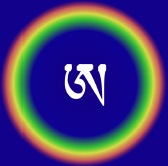
In Dzogchen, Rainbow Body (Tibetan: Jalü or Jalus or 'ja' lus) is a level of realization. This may or may not be accompanied by the 'Rainbow Body phenomenon'. The Rainbow Body phenomenon has been noted for centuries, including the modern era. Other Vajrayana teachings also mention Rainbow Body phenomena. – Wikipedia
Essentially, Harris has created an imaginary model of waking up, based on those darned double-secret-pointing-out-instructions of Dzogchen. He claims Dzogchen is rationally compatible with science because it views the self as illusion. He never mentions that the Primordial Adi Buddha concept within Dzogchen, as well as the Dharmakaya/Buddha nature Embryo of Buddhahood, and the Rainbow Body, completely contradicts science and the current model of evolution. You cannot separate Dzogchen and the concept of living Buddhahood from the phenomenon of the Rainbow Body, which has always been proof of the real Dzogchen yogi that has fully united the three bodies. Harris chooses not to disclose that the Rainbow Body is the actual reason why many Tibetans consider Dzogchen to be the most advanced system of Tantric Buddhist meditation in the first place. It is common knowledge in Bhutan, that every generation or two the most advanced meditators achieve the Rainbow Body at the time of death. The corpse of the adept is said to shrink away to nothing within a week or two after death, sometimes leaving some hair and nails. This is the real Dzogchen view of the living reality of enlightenment without remainder, which physiologically proves form is emptiness and emptiness is form. A real Dzogchen adept would automatically tell you that Advaita Vedanta is wrong, and that the meditation/yoga lineages that do not result in the Rainbow Body are relatively incomplete because of their inferior understanding of vitalist pranic subtle body theory. All of the Rinpoches that Harris paid to receive the secret pointing out instructions about the secret enlightenment of the present moment, literally believe human beings can turn into light (the Great Transfer) the highest level of meditation/yoga according to Dzogchen. For Harris not to mention this amounts to deception. How would his friend Richard Dawkins respond to the Dzogchen model in which the origin of consciousness is Buddhahood, which means evolution is wrong? I have also had Taoist adepts tell me that Dzogchen is inferior because they leave hair and nails, and Taoist adepts transform everything leaving nothing.
The meditation establishment never seems capable of discussing the basic fact that the nondual systems Dzogchen, Mahamudra, and Advaita Vedanta believe in an enlightened origin within each individual as well as the species. The concept of nonduality as understood by the primary systems, which use it as a model of reality, is not compatible with the Western framework of evolution. Another serious flaw in Harris' model of meditation is that he chooses to ignore the primary subtle body theories of Tibetan meditation/yoga systems within which he claims awakening. By separating the enlightenment of the mind from the enlightenment of the body he demonstrates his inability to understand one of his own teachers, Dilgo Kyentse Rinpoche, considered by many to be the foremost Dzogchen master of his time.
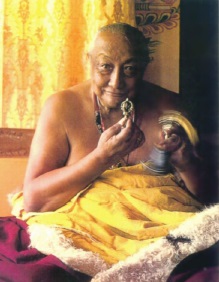
Dilgo Kyentse Rinpoche, Dzogchen Master
Dilgo openly stated, “The Tummo is the root of the path.” Translated this means that Tummo or heat yoga, a Tibetan version of Kundalini yoga, is the primary method underlying Tibetan meditation/yoga systems. And now we get to the heart of the truth, which is very different from Harris' highly mythical narrative, “Spiritual life consists in overcoming the illusion of the self by paying close attention to our experience in the present moment.”[2] The truth is that completely contrary to Western science, Indo-Tibetan meditation/yoga and its unique approach to inner illumination is 100% vitalist.
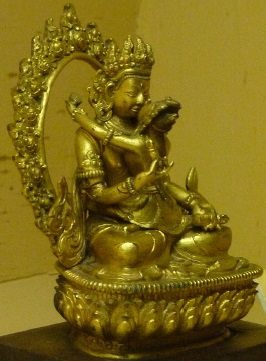
Padmasambhava in Union with Consort Yab/Yum, Male/Female, Tibetan Pronunciation of Yin/Yang.
Indo-Tibetan religious art tells one basic Tantric meta-narrative over and over. The yab/yum, (yin and yang in Tibetan pronunciation) sexual yoga images, clearly tell the viewer that a man and a woman can become living Buddhas, fully awakened enlightened beings, through the practice of Karmamudra or sexual yoga. These practices are also the basis of classical Chinese medicine, and the Six Yogas of Naropa, which Harris never mentions, begins with Tummo and ends with Karmamudra. (Dzogchen is associated with the old translations, Mahamudra with the new translations.) This is the reason for the famous Tibetan Buddhist saying, “There can be no Mahamudra or enlightenment without Karmamudra or sexual yoga.” Dzogchen calls these methods the practices of the lower gates that are usually not taught until after Tummo instruction, which is required for the complete transmission of many of these lineages. The sexual yoga practices are one of the primary differences between Mahayana and Vajrayana Buddhism, and represent one of the primary differences between a Bodhisattva and a Mahasiddha. A Bodhisattva is celibate, and a Mahasiddha may use sexual yoga, and other practices like the Six Yogas of Naropa. Harris describes his version of enlightenment as follows, “I don't deny that a truly enlightened man or woman – one that has fully and permanently unraveled the conventional sense of self – might awaken his or her students by violating certain moral or cultural norms.”[3] Does “unraveling the conventional sense of self” actually conform to the Tibetan meditation/yoga theory and practice of uniting the three bodies, the Trikaya?
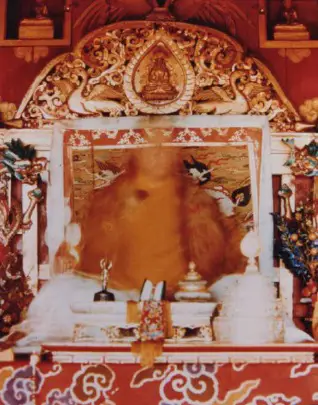
Rangjung Rigpe Dorje in the beginning stages of the Rainbow Body.
“I did not have to believe anything irrational about the universe, or about my place within it, to learn the practice of Dzogchen.”[4]
- Sam Harris
Unraveling the conventional sense of self is Western psychological jargon completely misapplied to ancient Asian systems of yogic consciousness refinement and liberation, which have always used a working vitalist process based on jing, chi, and shen or nadi, prana, bindu, tsa, lung, thigle, in Chinese, Sanskrit and Tibetan respectively. The goal of these systems whether they use a Dzogchen dark retreat, or sexual yoga, is to unite the three bodies, physical, subtle and super subtle. For thousands of years, many individuals in China, India and Tibet have achieved enlightenment or Buddhahood using these inner alchemical vitalist yogic practices. Science of course, says all of this is impossible because chi/prana has been proven not to exist. Harris doesn't even mention the Tummo/Kundalini, which is better known than the Taoist Sheng Tai, Spiritual Embryo, or Buddhist Tathagatagharba Embryo of Enlightenment, probably because it is actually the vitalist basis of the contemplative traditions he describes as compatible with science. Dzogchen can only take the goal as the path, by virtue of the base, which is the Tathagatagharba/Dharmakaya. Either Harris does not know, or he has intentionally chosen to avoid disclosing the actual methodology of the meditation/yoga practices that result in Tantric Buddhahood.
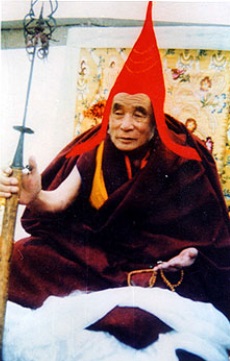
The great abbot Achö Rinpoche, the invisible hidden great yogi who, when near to passing away into the sorrowless state, left in a Rainbow Body. Khenpo Achö, although a Gelugpa monk, was a lineage holder of Drubje Pema Dudul's Dzogchen teachings. The hair and robe relics were offered by Lama Zopa Rinpoche to the Relic Tour on May 8, 2010. –The Maitreya Relic Tour
Although Harris is clearly well meaning, he has been forced by his self image to greatly distort Dzogchen, Advaita Vedanta and both Northern and Southern systems of Buddhism as a whole, to make their conclusions about reality conform with his current neuroscientific model. Obviously the goal of Buddhist meditation is Buddhahood, which is obviously not merely the magic of the present moment. From a normal atheist position, which rejects religious belief structures, he has merely replaced God with the recognition of the empty illusory character of the self in the present moment, which he mistakenly describes as the essence of the contemplative traditions. He goes so far as to suggest that awakening is just basically stress relief, which is the current perspective of the Mindfulness meditation establishment, which has achieved major success in terms of scientific/medical validation of the healing potential of meditation. Harris writes, “In one sense the Buddhist concept of enlightenment really is just the epitome of “stress reduction” – and depending on how much stress one reduces, the results of one's practice can seem more or less profound.”[5] The major problem here is that obviously no realized Buddhist in the last 2500 years has ever considered Buddhahood to be merely defined by stress relief. The significant issue here is that none of the systems whose essence he claims to have experienced conform to his model of awakening, in any way, in their actual Asian versions. He has unsuccessfully modified Mindfulness, Advaita Vedanta and Dzogchen, and completely and hopefully unintentionally omitted real Buddhahood, the complete realization of the Buddha nature, in the process. This is a disgraceful act, which is now common within the Western meditation establishment, which is unable to successfully distinguish between intellectual understanding, vitalist realization, or complete liberation, the union of the three bodies, the Trikaya. No matter how long he has meditated, Harris cannot explain the actual mechanism of enlightenment, which is not compatible with current science in any way. It could be easily argued that Harris' book actually demonstrates that meditation doesn't necessarily work for everybody.
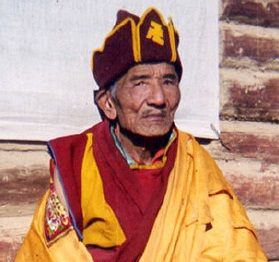
Shardza Tashi Gyaltsen was a great Dzogchen master of the Bon tradition of Tibet who took not only Bon disciples, but gathered students from all traditions of Tibetan Buddhism. He has been reported to have attained the Rainbow Body.
From a Judeo-Christian Western science perspective, Mahayana and Vajrayana Buddhism claim that any human being that unites the three bodies becomes a living Buddha, and that this is the actual result of the completion stage of meditation, which may include sexual yoga in Mahamudra and Dzogchen systems. When you write a book about waking up that omits the realization of the Buddha nature as the fundamental goal of many Buddhist traditions, and choose not to discuss the actual mechanism of enlightenment (nadi, prana, and bindu), as described in the actual lineages, a serious credibility problem emerges. Once again the meditation establishment is essentially marketing New Age nonduality as the real thing, which actually prevents enlightenment. The end result of misunderstood Dzogchen is the opposite of actual Buddhahood, and is sometimes called the curse of Rudra (a famous demon). It becomes a subtle but clearly recognizable narcissistic personality disorder with delusions of grandeur, with potentially horrible consequences. Essentially the person becomes a demon while believing they are a Bodhisattva.
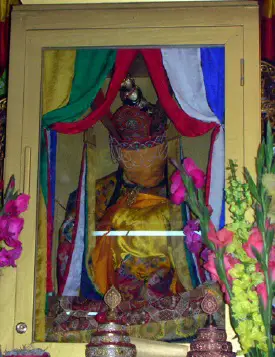
Chogye Trichen Rainbow Body – 2007
(Signs of achieving the Rainbow Body including shrinking down in size.)
Let us discuss the fundamental Tantric meta-narrative, which many scholars have successfully identified as an underground tradition in Chinese and Indo-Tibetan meditation/yoga systems, and Asian religion as a whole. This Tantric meta-narrative represents the essence of the Dzogchen base, path and goal, which is the union of the three bodies, complete realization of the Buddha nature, the Embryo of Enlightenment, the seed, flower and fruit of meditation. The fact that Harris uses Dzogchen to validate his model of awakening without ever mentioning the fundamental Tantric meta-narrative is as intellectually dishonest as not mentioning the Rainbow Body. The actual lineages have relatively clear vitalist subtle body maps that can be more or less verified by direct experience and personal thought experimentation. Tibetan art shows Buddhas practicing sexual yoga, which Harris chooses not to mention. What is a reasonable and clear interpretation of these Tantric Buddhist images of enlightened human potential, which clearly depict sexual yoga as the secret of Buddhahood?
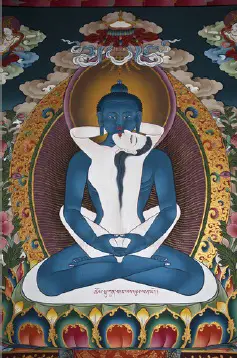
Samantabhadra, the Primordial Buddha.
These images actually show the final experience of Dzogchen practice, in the case of Samantabhadra, the Primordial Buddha, the union of mother and child lights, which is the result of completing the thogal leaping over practice. So the art depicts a multilayered Tantric secret. The image shows that human beings have been achieving enlightenment through the practice of sexual yoga since the beginning of time, which must necessarily be the origin of consciousness from an accurate nondual perspective. The story tells us the origin of consciousness is Buddhahood, and can be recreated in the body by sexual yoga and other methods, which often include dark retreats and Tummo, the Tibetan version of Kundalini activation. Harris never mentions that basic Tantric meditation/yoga theory describes realization as the union of solar and lunar subtle channels within the central subtle channel. Complete liberation is the union of the three bodies, physical, subtle and super subtle, which results in discovering your true identity as a living Buddha, a fully awakened being. This is considered to be the ultimate Siddhi or Tantric super power. The super subtle body is the Dharmakaya, Embryo of Enlightenment, a dormant subtle structure of consciousness within the reproductive/enteric nervous system, which is dissolved or returned to void when literally embraced by the subtle body, which is the subtle structure of the central nervous system. This is why nirvana was originally described as extinction, like blowing out a candle. It can probably safely be assumed that many of the authors of the Tathagatagharba Embryo of Buddhahood literature successfully returned the Dharmakaya to void. This experience is the actual basis of Anatman, the Buddhist concept of nonself. Form is emptiness and emptiness is form is a logical conclusion from this vantage point of the actual completion stage of Buddhist Tantric meditation/yoga. Dzogchen itself is far older than Buddhism, and has direct parallels with Taoist meditation/yogic systems that describe the Dharmakaya as the yang subtle body or Embryo of Enlightenment, which is united with the yin subtle body. The yab/yum image of Tibetan Buddhism represents a later illustration of the fundamental union of yin and yang, pre-birth and post-birth structures of consciousness, which is the spiritual goal and perhaps origin of Chinese meditation/yoga systems.
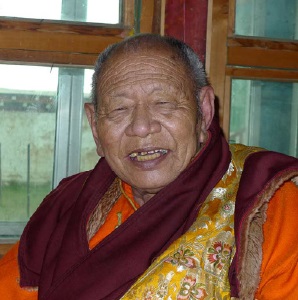
Lama Achuk Rinpoche entered into paranirvana and achieved the Rainbow Body at the age of 84.
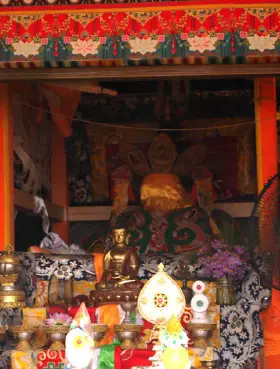
The Rainbow Body of Lama Achuk Rinpoche – 2011.
(Size about 3 cm or about 1 inch.)[6]
So how and why did Sam Harris manage to leave every significant aspect of the Tantric meta-narrative out of his book on spiritual awakening? How can he tell us that Buddhahood, Dzogchen, the Rainbow Body and science are mutually compatible? All of the teachers that transmitted the Dzogchen pointing out instructions to Harris believe Padmasambhava and Garab Dorje are living in other dimensions in light bodies. They all believe that hundreds of Dzogchen yogis have historically achieved the dissolution of the corpse at death, enlightenment without remainder, the Rainbow Body. From a scientific perspective Harris' Dzogchen teachers were wholly delusional, and he has merely replaced Western monotheism with Asian myth and superstition without honest disclosure, and made himself philosopher king. Dzogchen cannot be separated from the Rainbow Body, and still be considered to be a valid nondual description of the nature of reality. If you accept Dzogchen, and use a Dzogchen viewpoint, you must accept the Rainbow Body as a living reality. To not do so is a significant betrayal of the lineage, which has provided you with your perspective of sudden realization as well as the pointing out instructions themselves.
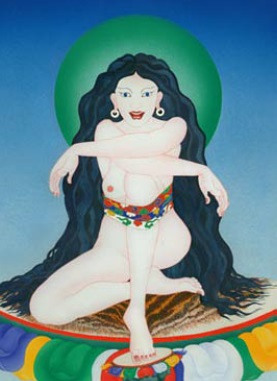
Ayu Khandro was a teacher of Dzogchen and Tantric Buddhism in East Tibet. She is known for spending many years in dark retreat, and for her practice of chöd. She is also reported to have achieved the Rainbow Body in 1953.
The other thing to remember is that neuroscience or transpersonal/integral psychological models cannot be currently integrated with this fundamental nondual Tantric meta-narrative, which is 100% based on vitalism. Thomas Nagel has successfully predicted post-postmodern vitalism in new forms. Proof of this is that insurance pays for acupuncture, which according to the Scientific American Journal of Mind has been validated therapeutically in legitimate laboratory studies for certain conditions. This is also true of meditation, yoga and Tai Chi Chuan. These are all vitalist systems of chi/prana refinement, and vitalism has allegedly been proven to be imaginary. What's going on here? Scholars David Ownby and David Palmer both disclose in their respective research on postmodern Chinese meditation/yoga systems that in the 70s the Chinese scientific establishment formally declared that chi exists, (including prominent nuclear scientists), which contradicts both Marxism and Western science. Both Chinese and Indian classical medical systems, are based on a secondary circulation system within the body that parallels the blood and nervous systems to some degree, which is unknown and unrecognized by Western medicine. The traditional Chinese and Indo-Tibetan meditation systems believe that complete realization can only occur if these subtle meridians are opened and cleared of blockages. The Dalai Lama uses the traditional description, which is untying the knots in the nadis. Tantric Buddhism and Taoist meditation/yoga believe that conventional meditators do not generally successfully connect the reproductive system with the brain, by opening the subtle channels within the body.
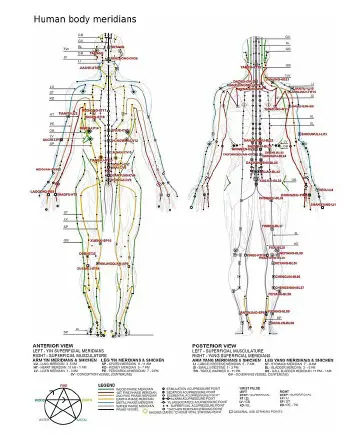
The Chinese Meridian System
Although Dzogchen is correct in identifying the path as the goal, and the point of power in the present, as opposed to an anticipated imaginary future state, the meditation establishment has tried to use a post realization perspective, without emphasizing the necessary nadi, prana and bindu practices, which generate the inner heat necessary to super charge the brain. According to Tibetan Buddhist meditation/yoga theory, the post realization experience is the result of uniting solar and lunar subtle currents within the central subtle channel. The Taoist equivalent is the union of micro and macrocosmic orbits within the body. Mantak Chia has explained this idea and made these teachings widely available since the 80s. He is one of the first teachers to openly disclose the living reality of the Embryo of Enlightenment within the body. Dzogchen describes itself as an instant enlightenment approach, but Harris cannot understand the real difference between sudden and gradual enlightenment although he is sure that he does. This is the problem with the nondual delusion of the meditation establishment as a whole. The problem becomes magnified when Harris insists that science, Mindfulness, Dzogchen and Advaita Vedanta all suggest enlightenment is merely the ongoing recognition of the absence of a real self in the present. How does this explain the famous Tantric Buddhist saying, “Buddhahood can be discovered in the vagina of a woman,” which is also the meaning of “Om Mani Padme Hum”, the Jewel in the Lotus, the most famous Tibetan mantra?
How does this Tantric Buddhist worldview square with Harris' remarkably simplistic self-help take on authentic inner illumination/awakening? “In my view the realistic goal to be attained through spiritual practice is not some permanent state of enlightenment that admits of no further efforts but a capacity to be free in this moment, in the midst of whatever is happening. If you can do that, you have already solved most of the problems you will encounter in life.”[7]
After decades of meditation, why does he still assume there is a difference between a permanent state of enlightenment and a capacity to be free in this moment? It appears that the nondual realization of Sam Harris may be the future of an illusion.

Father Francis Tiso, a Catholic priest, is the world's foremost expert on the Rainbow Body phenomenon. He has starred in the first film about the Rainbow Body called The Lost Secret of Immortality, and worked on the Institute of Noetic Sciences sponsored research project, which investigated a specific case of the Tibetan Buddhist phenomenon of the "Rainbow Body," the ostensible dematerialization of the physical body after death.
READ MORE
Click here for more information on the Rainbow Body phenomenon.
Click here for another article on Sam Harris and Mindfulness.
NOTES
- Sam Harris, Waking Up: A Guide To Spirituality Without Religion, (New York, New York: Simon & Schuster, 2014), p. 31.
- Ibid, p. 6.
- Ibid, p. 157.
- Ibid, p. 137.
- Ibid, p. 48.
- http://soonyata.home.xs4all.nl/sorubasamadhi.htm
- Ibid, p. 49.
|
 Barclay Powers is an author and futurist filmmaker. He earned
his Bachelor of Arts in East Asian Studies from Columbia University
and has an extensive background as an independent scholar. He has
studied Chinese, Tibetan and Indian meditation, yoga and martial arts
traditions for more than 30 years. Powers is currently releasing
multiple media projects worldwide in film and print, related to the
evolution of consciousness based on his studies with numerous
masters of ancient wisdom traditions. His most recent film, The Lost
Secret of Immortality, based on his book, won best
spiritual/religious/Christian film at the Great Lakes International Film
Festival, 2012, the Silver Palm Award at the Mexico International Film
Festival, 2012 and best spiritual documentary at the New York
International Film Festival, 2011. See his website at
www.lostsecretofimmortality.com for information on the book,
graphic novel and film.
Barclay Powers is an author and futurist filmmaker. He earned
his Bachelor of Arts in East Asian Studies from Columbia University
and has an extensive background as an independent scholar. He has
studied Chinese, Tibetan and Indian meditation, yoga and martial arts
traditions for more than 30 years. Powers is currently releasing
multiple media projects worldwide in film and print, related to the
evolution of consciousness based on his studies with numerous
masters of ancient wisdom traditions. His most recent film, The Lost
Secret of Immortality, based on his book, won best
spiritual/religious/Christian film at the Great Lakes International Film
Festival, 2012, the Silver Palm Award at the Mexico International Film
Festival, 2012 and best spiritual documentary at the New York
International Film Festival, 2011. See his website at
www.lostsecretofimmortality.com for information on the book,
graphic novel and film.













